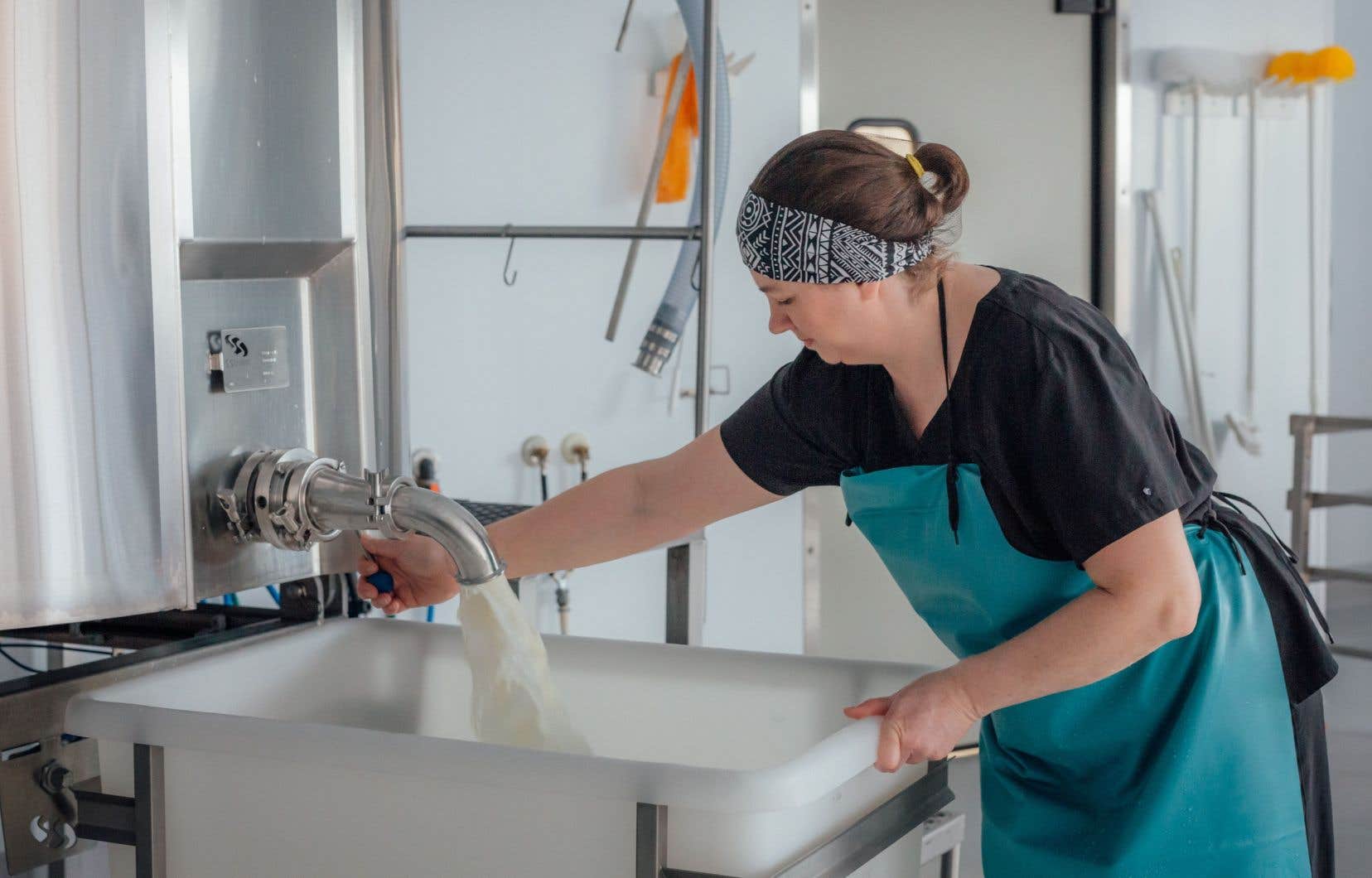Ottawa is coming to the rescue of processors and dairy producers who are struggling with what remains of milk when the fat has been extracted, particularly to make butter or cream.
These residues, called non-fat milk solids (NFS), are rich in proteins and minerals, but must be processed to have a second life with consumers.
However, there are more and more of these solids due to changes in consumer habits.
“The root cause [de la croissance des surplus de SNG]it is the consumption of types of dairy products that has experienced growth in recent years, for example cream and butter,” explained the president and CEO of the Dairy Processors Association of Canada, Mathieu Frigon, at a press conference Friday at the Agriculture Canada Research and Development Center in Saint-Hyacinthe.
He added that recent trade agreements, including the one with the United States and Mexico and the one with Europe, “have created a lot of uncertainty on the business side to invest to process this skim milk.”
$333 million over ten years
Hence the announcement by the federal Minister of Agriculture, Lawrence MacAuley, to offer processors an envelope of $333 million over ten years to support the modernization, expansion or even construction of new facilities and other types of investments which will make it possible to process a greater share of SNG.
“To date, we have not found a way to tell a cow not to produce!” joked the parliamentary secretary to the Minister of Agriculture, Francis Drouin, who participated in the announcement alongside the minister.
With an increase in transformer production, “there are derivative products that will be able to be made, I expect the sector to innovate in these new products, and what is good for the transformer will be good for the dairy producer at the end of the line. At the moment, the only market that dairy producers often have is for food intended for animals,” added Mr. Drouin.
“We will no longer make concessions”
Ottawa had promised, by concluding trade agreements which opened a breach in the protected markets for production under supply management, to compensate producers and processors. And even if it is consumer choices that are the primary cause of the growth of surpluses, the opening of markets had slowed investment, argued Mr. Frigon.
Francis Drouin clearly recognized this by stating that this envelope “concludes all the support promised to producers and processors following the market losses of recent trade agreements”.
In the same breath, Mr. Drouin repeated the comments made in English a few moments earlier by his minister: “The Government of Canada will continue to safeguard, protect and defend supply management. We will no longer make trade concessions in supply-managed sectors.”
These words were certainly music to the ears of Daniel Gobeil, vice-president of the Dairy Farmers of Canada and president of the Producteurs de lait du Québec. “Thank you, Mr. MacAuley for your support of supply management. I am very happy to hear your commitment to supply management,” he declared.
Even if the aid will not be paid directly to dairy producers, they will see a strengthening of the supply chain and better outlets for their SNG residues.
Source of disputes
The issue of trade and free trade agreements has often been a source of dispute between Ottawa and producers of milk, poultry and eggs, all products protected by the supply management system.
The various federal governments have always promised to protect them during free trade negotiations, but international partners have often succeeded in forcing Canada to bend its back and accept breaches in this protection.
In return, Ottawa had to commit to paying compensation and aid to producers and processors, aid of which Friday’s envelope represents the last part in the dairy sector.
There is no doubt that the sector will be ready to do its part in modernizing and increasing SNG processing: the aid announced on Friday will only cover 25% to 33% of the investments made by processors. In other words, the private sector will assume between two thirds and three quarters of the required investments.
Quebec will receive $109 million of the $333 million envelope over ten years. Ontario will receive 127 million, while 74 million and 18 million are intended, respectively, for the Western provinces and the Atlantic provinces.
